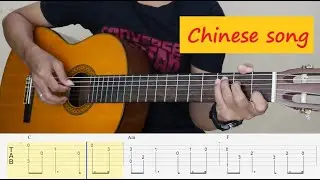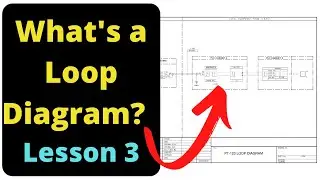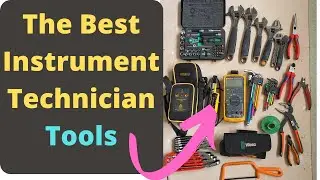Digital Input Card - PLC Basics for Beginners - [Part 3]
In this video I will talk about digital input cards that are found in PLC systems. We will discuss what they are used for and the typical wiring schematics you will come across.
Digital inputs are a frequent I/O card that you will find in PLCS. They act as an interface between a whole host of input instrumentation in the field to the PLC controller in our control and equipment rooms.
They can be connected to any instrumentation or devices that open or close a contact, some of the common types of inputs you find are:
Pressure, temperature, level & flow switches attached to process systems.
Limit switches for equipment or valves.
Push buttons that may be used for shutdown buttons, e-stops, annunciator controls as well as motor control buttons. Basically, any time you need a human interface for an action a push button wired into digital input can be used.
There are many more examples that you will come across.
Lets talk about the characteristics of a digital input.
The most common control voltage for a digital inputs is 24VDC. But you can find other more obscure variants. Always look at the specification sheets for your specific system.
Digital input cards are usually multi channelled and usually are found in 8 & 16 channel formats. This means each channel can have a different field device.
Ok lets look at the typical wiring configuration you will find in a modern PLC for a digital input.
Here we have our input card. It could be powered by the back plane that will connect it to the controller or it might have terminations for the positive 24 volts and the 0 volt connection.
Our field device, in this case a switch, will be connected via cabling into the panel where the PLC is housed. For this example we have a simple 1 pair cable.
We would then run 24V from the same source as our digital input card down one of the wires through the device and back on the other pair and connect through internal patch wiring to our input card.
When our switch’s contact opens and closes it put 24Vs on and off the input cards channel and thus gives a condition change.
Some systems will be setup with an interposing relay to separate field and panel voltages. This is to prevent field shorts interfering with the cabinet wiring that could lead to damage of the equipment.
You might also find input barriers are used where the field equipment is in a hazardous area.
In large systems a common wiring configuration is via the use of break out connectors. These allow a whole input card to have its termination points in an adjacent panel to the PLC inputs. This is used as segregation from PLC devices to Field wiring.
I hope this gives you a better understanding of what digital inputs are for.
▶▶Check out some of the products I recommend on my website: https://www.instrumentationcontrol.in...
▶▶Check out brilliant T-shirts / Merch at my store: https://www.redbubble.com/people/rudd...
▶▶Check out my website for more articles on Instrumentation: https://www.instrumentationcontrol.in...






![[Free] Ajna Type beat - Redescente](https://images.videosashka.com/watch/KkTX3XAV1Rc)


![PLC Basics for Beginners - [Part 1]](https://images.videosashka.com/watch/c4VrA0kx5zc)
![Instrumentation Calibration - [An Introduction]](https://images.videosashka.com/watch/SamV6zpRNgg)


![What Is OHM'S Law ? [Explained in Under 5 Minutes]](https://images.videosashka.com/watch/uZ-m91IEkjQ)
![Pressure Transmitter Workshop Re-range - [HART 475 / Fluke 789 / Druck DPI610 / Foxborough TX]](https://images.videosashka.com/watch/L7T92J7wpzE)

![PLC Basics for Beginners Part 2 - [ PLC Architecture ]](https://images.videosashka.com/watch/p-p2IjxGelQ)

![Digital Input Card - PLC Basics for Beginners - [Part 3]](https://images.videosashka.com/watch/qPEBjqW9cE8)
